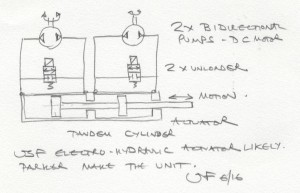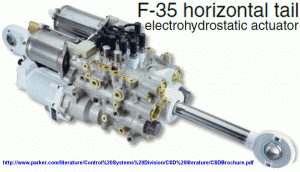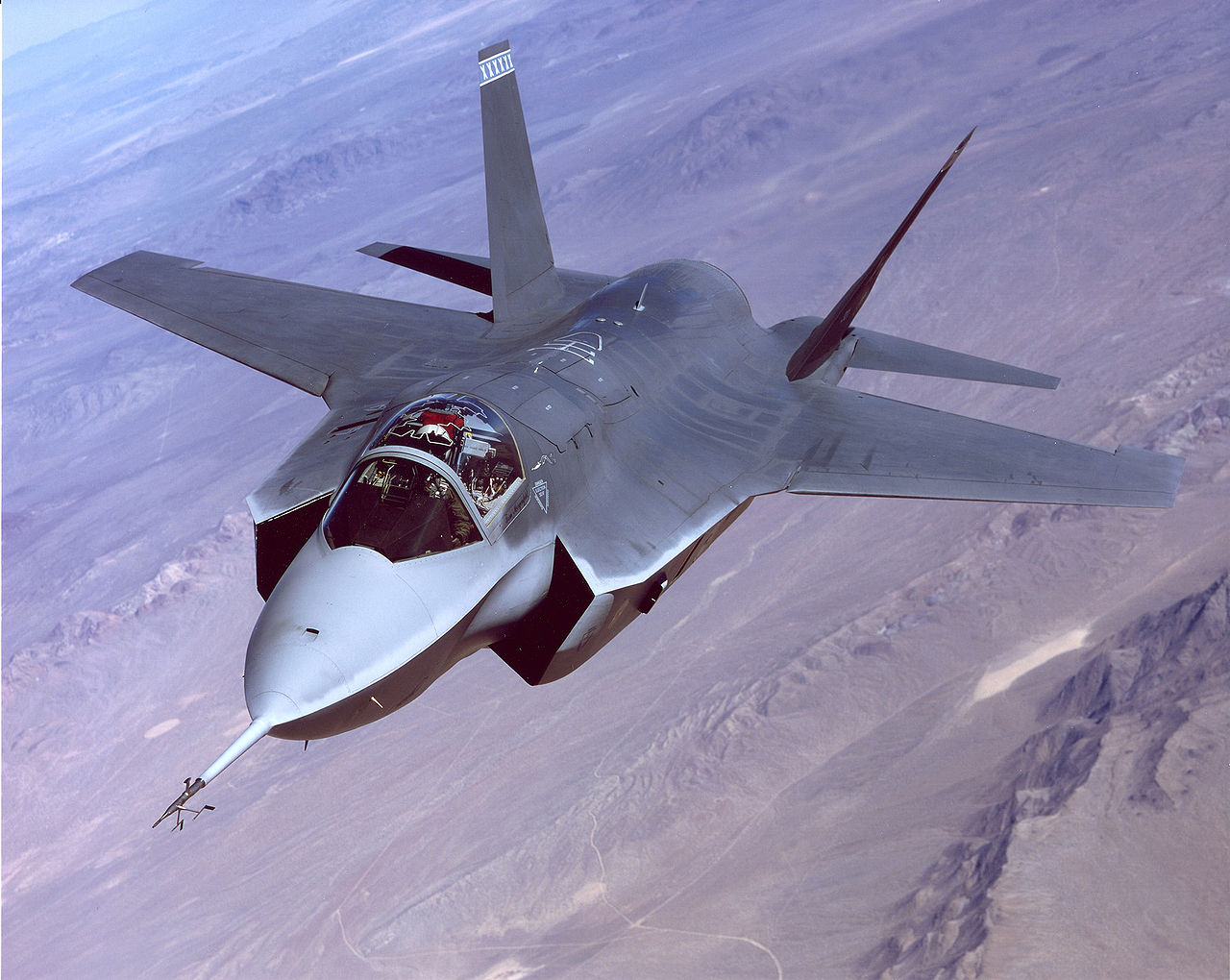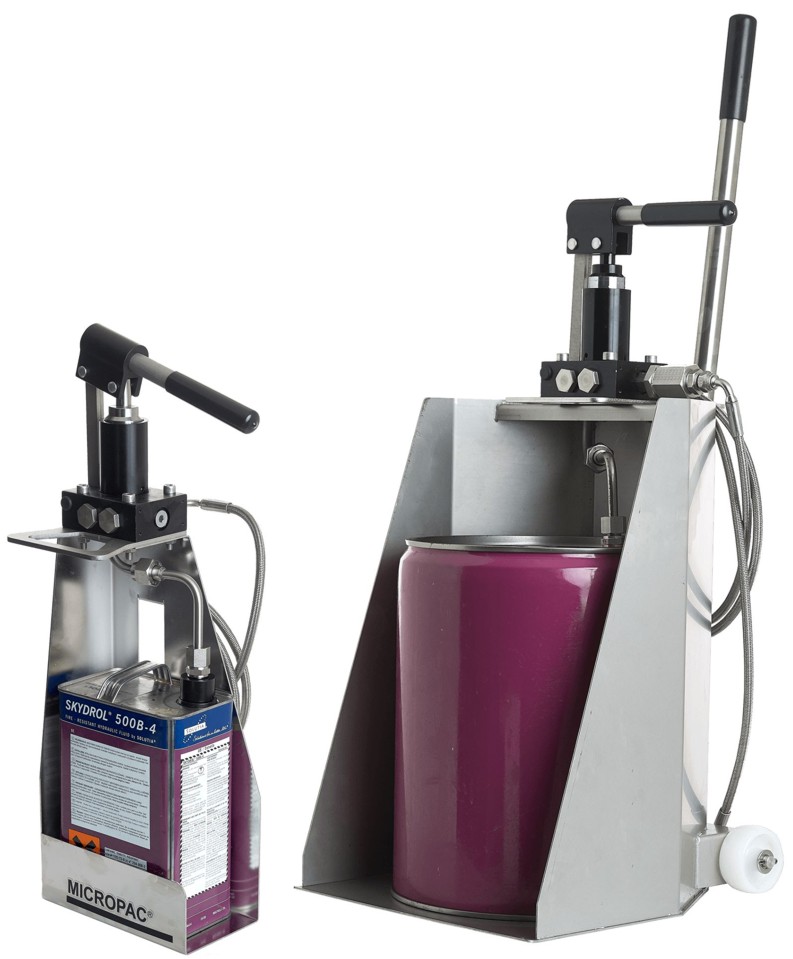Where a neat aerospace electro-hydraulic actuator might point the way on future mobile hydraulics.
Sarum Hydraulics loves innovative hydraulic design. There is always something interesting that a clever hydraulic designer comes up with whether it is aerospace, offshore, marine, mobile or the myriad other fluid power applications.
The F-35 Joint Strike Fighter (JSF) is a mega project. Two prototypes battled it out in 2001 with the X-35 concept aircraft from Lockheed Martin beating Boeing. Development has taken the last 15 years at a cost of 390 billion dollars, ultimately providing an estimated 2500 aircraft for the US and its allies. There are three versions, an F-35A for conventional runways, an F-35C carrier catapult launched variant and finally an F-35B vertical take off and landing (VTOL) replacement for the legendary Harrier. The UK is buying at least 48 of the F-35B VTOL variant to provide the airpower for the state of the art Queen Elizabeth aircraft carrier.
Having recently attended a fascinating Royal Aeronautical Society lecture, Sarum had somehow missed the design ingenuity that has gone into the hydraulics on this aircraft.
Where do you start? Maybe by just picking one area that we thought was particularly clever and has resonance with the Sarum world of commercial fluid power.
Aircraft hydraulics actuating control surfaces invariably means a pump piped up to cylinders or actuators via servo valves. It is well proven and very effective. Yes, electric actuation is also used, but hydraulics can still offer very high forces and a rapid response.
The JSF has opted for a number of combined pump and actuator units rather than a central pump, servo valves and piping up to multiple cylinders. Out goes a directional control valve to control a double acting actuator and instead the JSF uses a bi-directional gear pump which is simply reversed to cycle the actuator.
So what are the basic hydraulic components? Our sketch summarises how the circuit is likely to work, based on what is in the public domain. We are happy to be corrected.

A possible arrangement for the hydraulic circuit of the Joint Strike Fighters bi-directional gear pump
A bi-directional gear pump can be mighty useful in commercial hydraulics, as you run it in one direction and one port is pressurised with the other as suction. Reverse it and the ports are reversed. You would incorporate pilot operated check valves to shut off or open the tank line as you reverse the pump. We remember the useful Smiths bi-directional gear pump built into a miniature power pack and now manufactured by Fluidlink. There are still plenty of bi-directional gear pumps used in commercial hydraulics. Assuming the JSF uses a gear pump, it will need some way of shutting off the lines, although we have not drawn these in.
The DC motor will be higher tech than your everyday mobile hydraulic pack that so often uses the bi-directional gear pump, starting with a 270V DC operation DC motor rather than 12 or 24V DC. There is an interesting article on high voltage DC for aviation on FCX Systems.
The JSF has doubled up the motorised pump unit in each actuator assembly to give redundancy. These pumps drive a tandem cylinder with the double piston on a single piston rod. The tandem cylinder gangs two double acting cylinders on to one rod and although complicated in construction and sealing, it achieves the objective of redundancy to an extent. If one pump fails, each unit has an unloader valve across its respective cylinder to eliminate the defective unit. Yes, the actuator force will be much reduced unless the pressure is boosted on the remaining pump, but at least you do not suffer total failure. Clever stuff!
The web suggests that this concept was thought about long and hard. It is probably more expensive, but serviceability and survivability are big things on the JSF wish list. Can the unit change direction as quickly as a servo valve? It is difficult to believe so, but the philosophy of the JSF seems to be to just ask the pilot to say where he wants the aircraft to go and lots of different systems react instantly using software to achieve the desired result. Redundancy is a big plus, so the tandem arrangement that can be in three different modes instantly is really rather clever. Eliminating pipe work makes the hydraulics less vulnerable to damage in combat.

Parker makes the units, so look on on http://www.parker.com/literature/Control%20Systems%20Division/CSD%20literature/CSDBrochure.pdf
As the RAeS lecture was only based on what was in the public domain, there is undoubtedly more to this product than we know. Never the less, it is always interesting to see where a bit of lateral thinking has come up with an elegant hydraulic solution.
As always, feel free to comment or put us right. Our aviation products are limited to Micropac manual oiling, filling and test units, used throughout the world every day.
See what we do on www.sarum-hydraulics.co.uk.






Later this year or in early 2020, the F-35 will go into full-rate production, with Lockheed expected to churn out 130 to 160 or more planes per year, a huge step up from the 91 planes delivered in 2018. That production milestone will be a symbolic turning point for the program, evidence that major problems that plagued the Joint Strike Fighter in the past are now history. Yet even as the program plows forward, unresolved technical issues have continued to emerge.